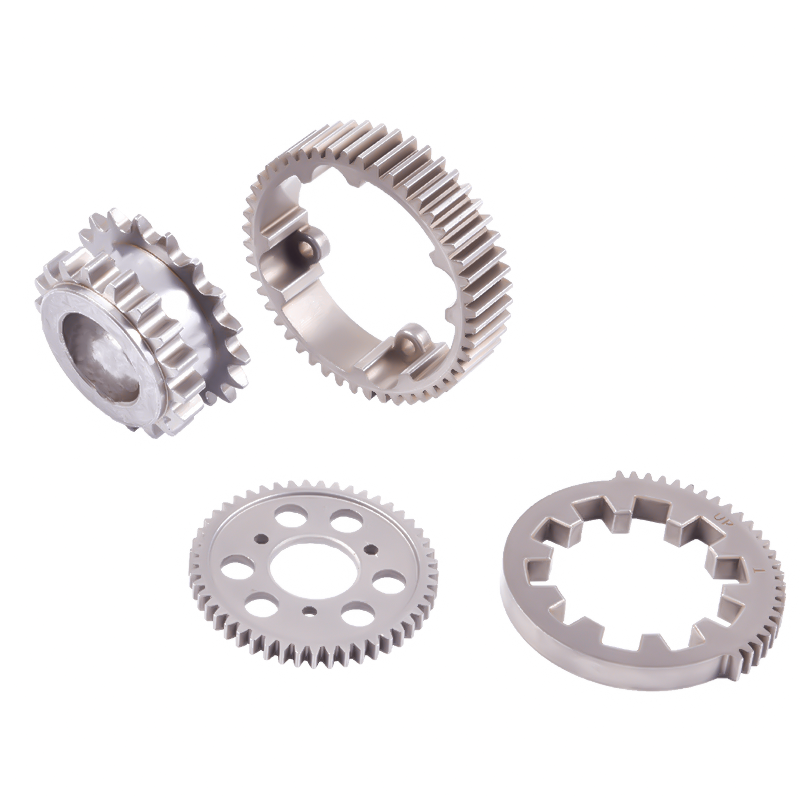In recent years, robotics has emerged as a field with vast potential. From industrial automation to consumer electronics, robots are rapidly transforming the way we live and work. One key aspect of robotics that has been evolving rapidly is the use of planetary gears. Planetary gears have proven to be extremely useful in robotics, providing the much-needed compactness, torque, and precision that robots require. In this article, we explore why planetary gears are the future of robotics.
Planetary gears, also known as epicyclic gears, are a type of gear system that consists of a central sun gear, one or more planet gears that revolve around the sun gear, and a ring gear that encloses the planet gears. The planetary gears rotate on their own axis while simultaneously revolving around the central sun gear. This type of gear system has a number of advantages that make it ideal for use in robotics.
Firstly, planetary gears are incredibly compact. The design of the gear system allows for a high gear ratio in a small volume, making them perfect for use in small robots. This compactness is particularly useful in applications where space is at a premium, such as in drones, where every gram of weight and millimeter of space counts.
Secondly, planetary gears provide high torque. The design of the system allows for the torque to be distributed evenly across the planet gears, resulting in a high torque output. This makes them ideal for applications that require high torque, such as in robotic arms and grippers. Additionally, the even distribution of torque means that the system can handle higher loads without the risk of gear tooth failure.
Thirdly, planetary gears provide exceptional precision. The design of the system ensures that the gears remain in constant contact, resulting in a smooth and precise motion. This makes them ideal for applications that require high precision, such as in robotic surgery or assembly lines. Additionally, the use of planetary gears can reduce backlash, resulting in a more accurate and responsive system.
Finally, planetary gears are highly efficient. The design of the system ensures that the gears are in constant contact, reducing the amount of energy lost through friction. This means that planetary gear systems require less energy to operate, making them ideal for applications where energy consumption is a concern, such as in autonomous robots.
In conclusion, planetary gears are the future of robotics. Their compactness, high torque output, precision, and efficiency make them ideal for a wide range of robotic applications. As robotics continues to advance, we can expect to see an increasing number of applications that rely on planetary gears to provide the necessary power, precision, and efficiency.

The main features of planetary gear transmission are small size, large carrying capacity and stable operation. However, the transmission structure of high-power and high-speed planetary gears is complex and requires high manufacturing precision. Some types of planetary gear transmissions are efficient, but the ratios are not large. Other types can have large gear ratios but are less efficient. When they are used as reducers, their efficiency decreases with the increase of the transmission ratio; when they are used as speed increasers, self-locking may occur.
Planetary gear trains are widely used in various machinery.
1. Realize reduction transmission with large transmission ratio
2. Realize compact high-power transmission
3. Synthesizing motion
4. Achieving the decomposition of motion


 English
English Español
Español About us
About us +86-15867340627
+86-15867340627 cy@sxgtqp.com zb@sxgtqp.com
yzq@sxgtqp.com
cy@sxgtqp.com zb@sxgtqp.com
yzq@sxgtqp.com Building 44, Energy Saving Shaoxing Environmental Protection Industrial Park, Yuecheng District, Shaoxing City, Zhejiang Province, China
Building 44, Energy Saving Shaoxing Environmental Protection Industrial Park, Yuecheng District, Shaoxing City, Zhejiang Province, China